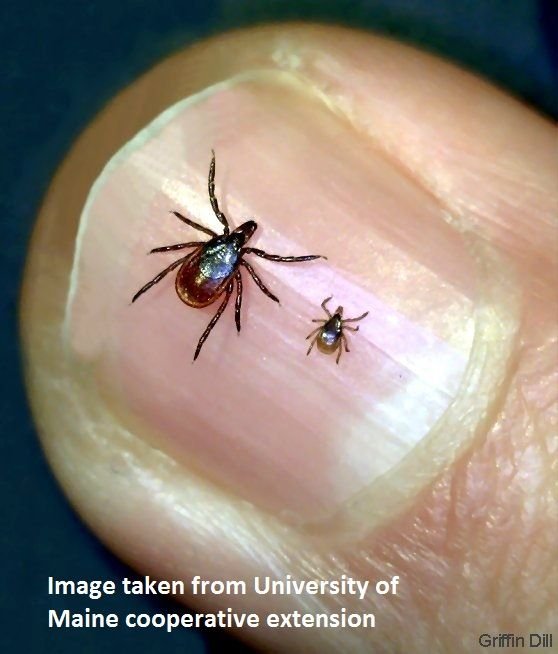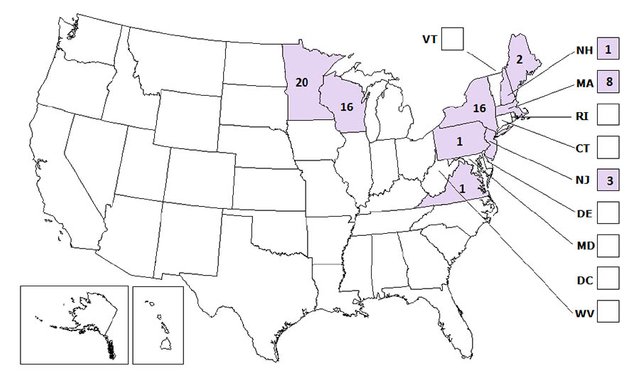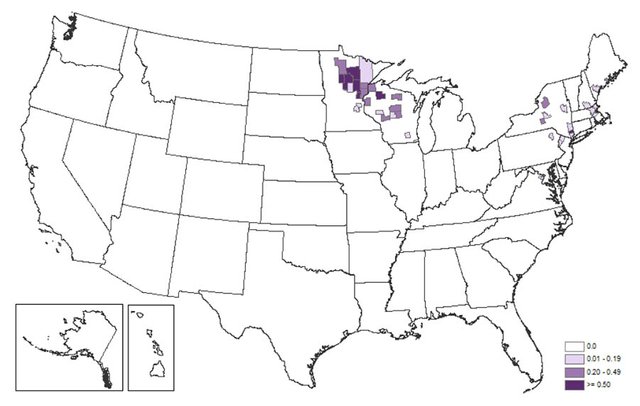Be aware of what may be lurking in your neck of the woods
One of my favorite things to do, since I was a child is to go hiking, no matter what the season. Whether in the spring or summer, smelling the lush growth of forest vegetation, the fall enjoying the changing of the leaves, or in the winter when the woods are so desolate that the sound of snowflakes falling on the landscape becomes a dull roar. But as of late, the joys I get from a venture in to the woods have been somewhat replaced by fear.
It seems nature has it's own terrorist, and it is becoming a more formidable foe. I'm talking about the tick. There are a number of species of ticks in the United States, and though not everyone of them bite humans, the handful that do, have the possibility of transmitting a number of diseases. This never bothered me when I was younger and to be honest, with all the time I have spent tramping around the woods, I did not come in contact with my first tick until about 6 years ago. Unfortunately this one encounter was all that was needed to infect my dog Sydney with Lyme disease. And little did I realize at the time, that this was not going to be my last confrontation with this vile little arachnid. One little creature no bigger than the head of a pin was all it took to turn my youthful acting pooch in to a crippled poor old dog.
Since then, I can not tell you how many ticks I have had to pull off of her, adding a laborious hour of combing through her thick black coat after every hiking excursion. And regardless of my efforts, this is like finding a needle in a hay stack and the parasites are often not always found until they have begun to feed and grow considerably in size, which by then have been attached for some time and have had a chance to transmit any disease they may be carrying.
Beside finding countless ticks on my dog here in upstate New York, i can honestly say, I have lost count of the number I have found crawling on myself and my 6 year old son in the years since by dog's infection. In the past month, we have found at least one tick on one of us every time we have gone hiking. Thankfully they have just been crawling on us and not yet imbedded. There is not a single hike that we go on, that does not involve multiple diligent tick checks immediately after hiking, up until a day or two later, fearing one may have latched on to clothing or car upholstery and found it's way on to us later on.
With winters that have been much more mild, and a large bumper crop of acorns in 2015, the population of deer and mice have proliferated. And along with and increase in the number of these host animals, the number of parasites that feed on them have grown as well.
Though Lyme disease, scary enough as it is, is a threat, transmission usually does not occur until the tick has been feeding for 36 hours. This gives a person considerable time to check themselves over after a hike and properly remove any ticks that have hitched a ride. Though this is still rather creepy, it has not really stopped me from taking my son on hikes and mushroom foraging excursions, but there always coexists a fear that has made these hikes, if not less enjoyable, simply more burdensome.
And if the fear of Lyme disease wasn't enough, there is a newer, much scarier disease which is now surfacing throughout the north eastern and upper midwestern United States. This disease is called the Powassan virus. It first surfaced in Powassan Ontario in 1958, claiming a young boy as it's first victim. Since this time, it has remained relatively rare. It is said that it had previously only been found in the woodchuck tick, which claims say rarely bite humans. But at some time this virus had evolved to also affect the deer tick, also called the black legged tick. Wikipedia goes on to say that it can actually be found in up to six tick species, including ones that feed on mice and squirrels, which takes this virus out of the forest vector and bring it much closer to home still.
This virus is particularly scary. It is said that a tick infected with Powassan virus can transmit the disease with in 15 minutes of biting it's host. That does not give you much time to find it on you, seeing as most people who like to hike spend significantly more time in the woods than 15 minutes. Further, there is no known cure for this virus, which in severe cases can result in death, attacking the brain and causing infection, swelling and neurological issues.
I am not writing this post to scare people, or for the gore factor, but it seems that even though there has been an effort to get this knowledge about the dangers of ticks, out to the population, some people apparently just don't seem to get it or care. Just last week, when I was out looking for mushrooms, I came across a family with two children who looked like they had to be around 5 and maybe 7 years old. To my horror, these children were rolling down a wooded slope that was covered in leaf litter. They were throwing leaves on each other and wrestling around and they had leaves and debris in their hair in their shirts and shoes, you name it. And their parents were encouraging the seemingly great photo op. I hated sounding like a buzz kill but I warned their parents that they better check them over well after their hike, to which they only seemed mildly interested and more so annoyed. That day I found one tick crawling on my neck, and I had done my hardest not to brush up against too much foliage or kick up too much of the forest floor as I traversed the woods. I hate to think of what they found on their children.
Below are two maps which I found on the CDC website. These are the most updated maps I have been able to find online and they are lacking data for 2016 and this year.
The first map shows the number of cases of Powassan virus by state, and the second shows the counties in which it has been found.
Just recently this article was written which tells of two individuals who have died from the virus this year in Massachusetts.
It seems like it will be likely that we will be seeing more cases of this, as well as other tick born illnesses in the future, no matter what part of the United States (sorry I haven't looked in to ticks in other parts of the world) you are in, so if you are planning a trip in to the woods, PLEASE take proper precaution. Stay on the trail at all time if you can. If you are a forager and have a reason to venture off trail, make sure you are wearing long pants and shirts, the lighter in color the better to see any hitchhikers as they try to make their way to a spot to feed. If you aren't willing to wear long clothes make sure you are checking yourself often. With my experience, though they are very small, one can feel them crawling on your neck or up your leg. Also use plenty of bug repellent, and though many people fear DEET, it is the most effective. When you get home from hiking make sure you check yourself and your loved ones over thoroughly, especially in your hair and your nether regions. The ones I find on myself and my son are usually around the nape of the neck and on the legs. If I am hiking by myself, I use my phone to take pictures of the parts of my body that I cannot see. And of course always take a shower as soon as possible after a hike.
If you do find a tick that has begun feeding on you, make sure you get to your doctors, as with adults they will usually give you an antibiotic. Also if you can, get the tick sent to check if it is carrying any disease. This helps map current spread of viruses.
This all sounds like a real pain in the butt I know, however, it could save you and yours from much more trouble down the road.
Hopefully this post has helped spread some information to those that may have not been aware of this issue, and hasn't deterred you from wanting to spend time enjoying nature.
As always thank you all for reading and any comments are invited and would be more than welcome.




Very informative post, I can relate to your disdain of ticks.
I did some research after ticks ruined a camping trip I went on about a year ago.
One solution which has worked wonders for me is to soak the clothes you're wearing for the hike in diluted permethrin and letting it dry prior to the trip.
This stops the ticks from clinging to your clothes, and I have had not had any issues with ticks since doing so. Each application lasts for quite a few washes so it's not something you have to do everytime.
You can also spray your dog or soak him down with some permethrin as well, though the dilution% would be different.
Once you buy the stuff you just add water up to the manufacturer's recommendation.
I hope this helps, it's a real downer to not enjoy the outdoors for fear of ticks.
-O.T.
Thank you. I had not heard of permethrin before. I am looking in to it now.
You're welcome! Just be careful if you have cats, the liquid is toxic to them. Hope this helps!
-O.T.